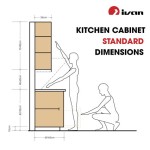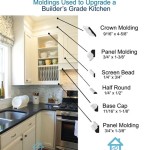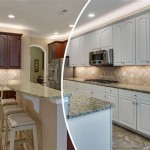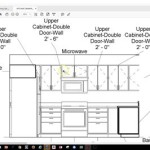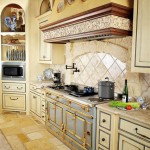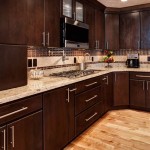How to Paint Kitchen Cabinets Without Leaving Brush Strokes
Painting kitchen cabinets can be a great way to update the look of your kitchen without breaking the bank. However, if you're not careful, you can end up with brush strokes that ruin the finished look. Here are a few tips to help you achieve a smooth, professional-looking finish.
Surface Preparation
The first step to painting kitchen cabinets without brush strokes is to properly prepare the surface. This means cleaning the cabinets thoroughly with a degreaser to remove any dirt, grease, or grime. Once the cabinets are clean, sand them lightly with fine-grit sandpaper to create a smooth surface for the paint to adhere to.
Use the Right Brush
The type of brush you use can also make a big difference in the finished product. For painting kitchen cabinets, it's best to use a high-quality synthetic brush with soft bristles. Natural-bristle brushes can leave bristles in the paint, which can create brush strokes. Also, make sure that the brush you're using is the right size for the job. A brush that's too small will take longer to paint the cabinets, while a brush that's too large can be difficult to control and may leave brush strokes.
Apply Thin, Even Coats
One of the most important things to remember when painting kitchen cabinets is to apply thin, even coats. Don't try to apply too much paint at once, as this will only lead to brush strokes. Instead, apply a thin coat of paint, let it dry completely, and then apply a second coat. If necessary, apply a third coat.
Use a Light Touch
When painting kitchen cabinets, it's important to use a light touch. Don't press too hard on the brush, as this will only create brush strokes. Instead, use a light, even touch and let the brush glide over the surface of the cabinets.
Brush in the Direction of the Grain
Another important tip for painting kitchen cabinets without brush strokes is to brush in the direction of the grain. This will help to create a smooth, even finish. If you brush against the grain, you're more likely to leave brush strokes.
Let the Paint Dry Completely
Once you've finished painting the kitchen cabinets, it's important to let the paint dry completely before using them. This will help to ensure that the paint doesn't smudge or peel. Allow the paint to dry for at least 24 hours before using the cabinets.
Additional Tips
Here are some additional tips for painting kitchen cabinets without brush strokes:
- Use a high-quality paint that is specifically designed for painting cabinets.
- Prime the cabinets before painting them. This will help to create a smooth, even surface for the paint to adhere to.
- Use a tack cloth to remove any dust or debris from the cabinets before painting.
- Paint the cabinets in a well-ventilated area.
- Don't paint the cabinets in direct sunlight.
By following these tips, you can achieve a smooth, professional-looking finish when painting your kitchen cabinets.

How To Paint Kitchen Cabinets Without Brush Marks Certapro Painters Of Grand Rapids

How To Paint Kitchen Cabinets Without Brush Marks Certapro Painters

How To Paint Kitchen Cabinets Without Sanding Or Priming

How To Paint Kitchen Cabinets Without Brush Marks Dengarden

How To Paint Your Kitchen Cabinets Without Losing Mind The Kim Six Fix

How To Paint Laminate Cabinets Without Sanding The Palette Muse

How To Paint Bathroom Cabinets Without Leaving Brush Strokes Hometalk

How To Paint Kitchen Cabinets For A Smooth Finish And Avoid Brush Marks Express Co

How To Paint Cabinets Without Removing Doors House Mix

How To Paint Bathroom Cabinets Without Leaving Brush Strokes Hometalk
Related Posts


